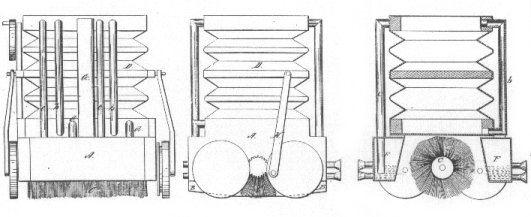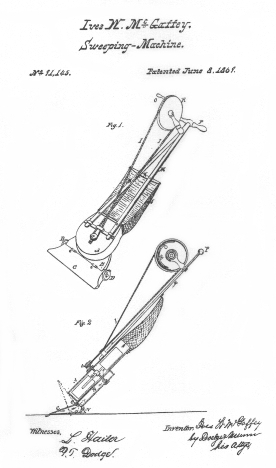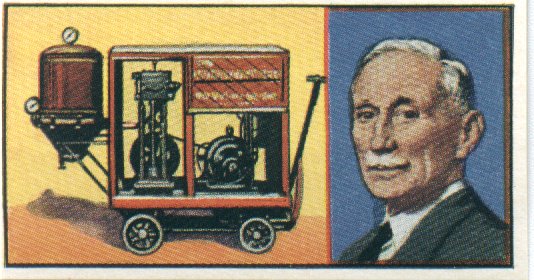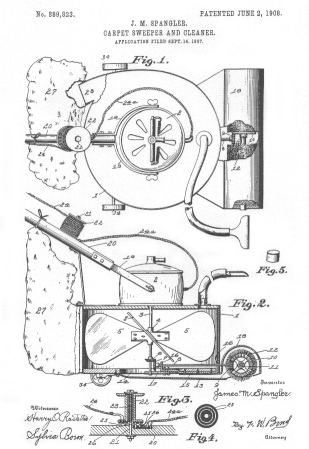There has been a lot of speculation about the date of the first vacuum cleaner and the person who invented it. Some patent dates that appear in literature are 1905, 1901, and 1869. I am going to shatter everyone’s thoughts with one of my own. Patent papers have revealed that a vacuum sweeper was produced by Daniel Hess in 1860. Hess, a resident of West Union, Iowa, called his invention a carpet sweeper, not a vacuum. The machine did, in fact, have a rotating brush like other sweepers, however, the machine also possessed an elaborate bellows mechanism on top of the body to generate suction. The amazing thing about his machine was that it incorporated two “water chambers” to capture the dust and fine dirt. He states that the air is cleansed as it passes through the device. This very principle is used in the Rexair vacuums of today. Until any new developments occur in the future, I believe the Hess machine to be the earliest portable vacuum cleaner in the United States.

The next significant machine to make an appearance, to my knowledge, is the Whirlwind vacuum cleaner. It was invented by a Chicago native named Ives McAffey in 1869. His machine was cleverly designed and had most of the components of a modern day upright vacuum cleaner, except for a motor. Suction was created by a fan driven by a belt connected to a hand crank at the top of the cleaner. Unfortunately, his company did not do very well. It is believed that McAffey did add an electric motor to his machine some time later, with no success. Perhaps his invention paved the way for later companies to flourish in the early 1900’s.

In 1901, an inventor named H. Cecil Booth built a formidable vacuum cleaner powered by an engine. It was so large that it had to be mounted on a cart and pulled through the streets of London, England where he lived. Suction was produced by a large vacuum pump and the operator would drag a 100 foot hose into the building that was to be cleaned. One of Booth’s customers was Queen Victoria. She would have the large machine brought to the palace to clean the floors, as well as entertain her guests. Later, Booth’s machine was given credit for ending the “Plague” in the English naval barracks. Dust and dirt were to blame for harboring germs. After the vacuum cleaner had removed numerous truckloads of dirt from billets, the plague ended. News of this miraculous occurrence traveled everywhere, and people on both sides of the Atlantic Ocean began to build vacuum cleaners. Even today, cleaners are marketed with the idea of preventing the spread of germs.

Murray Spangler worked as a janitor in Ohio. But, he was allergic to dust and his job aggravated his condition. After reading an article touting Booth’s triumph, he decided to build an electric version of Booth’s machine. A vacuum cleaner was created from a wooden crate, fan motor, broom handle, and pillow case in 1907. It worked! He began to sell his invention door to door. One of his satisfied customers was the wife of a prominent leathergoods maker named William Hoover. When Hoover saw the machine, he instinctively realized its potential for the future. He ultimately bought the patent rights for the vacuum. The Model O, as it was called, set the standard for all upright vacuum cleaners that followed. Thus, the Hoover Vacuum Cleaner Company was born in 1908.

This web page is being sponsored by our friends at carpetncare. Click the link below to get information on different types of flooring. carpetncare for carpet and flooring in yorkshire





